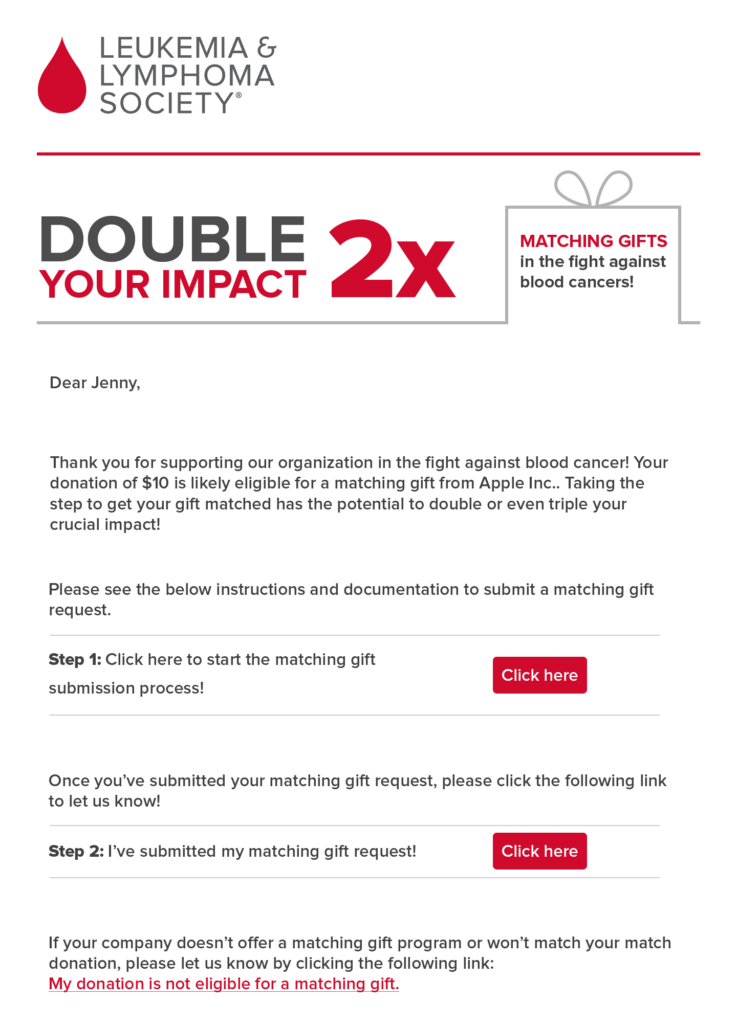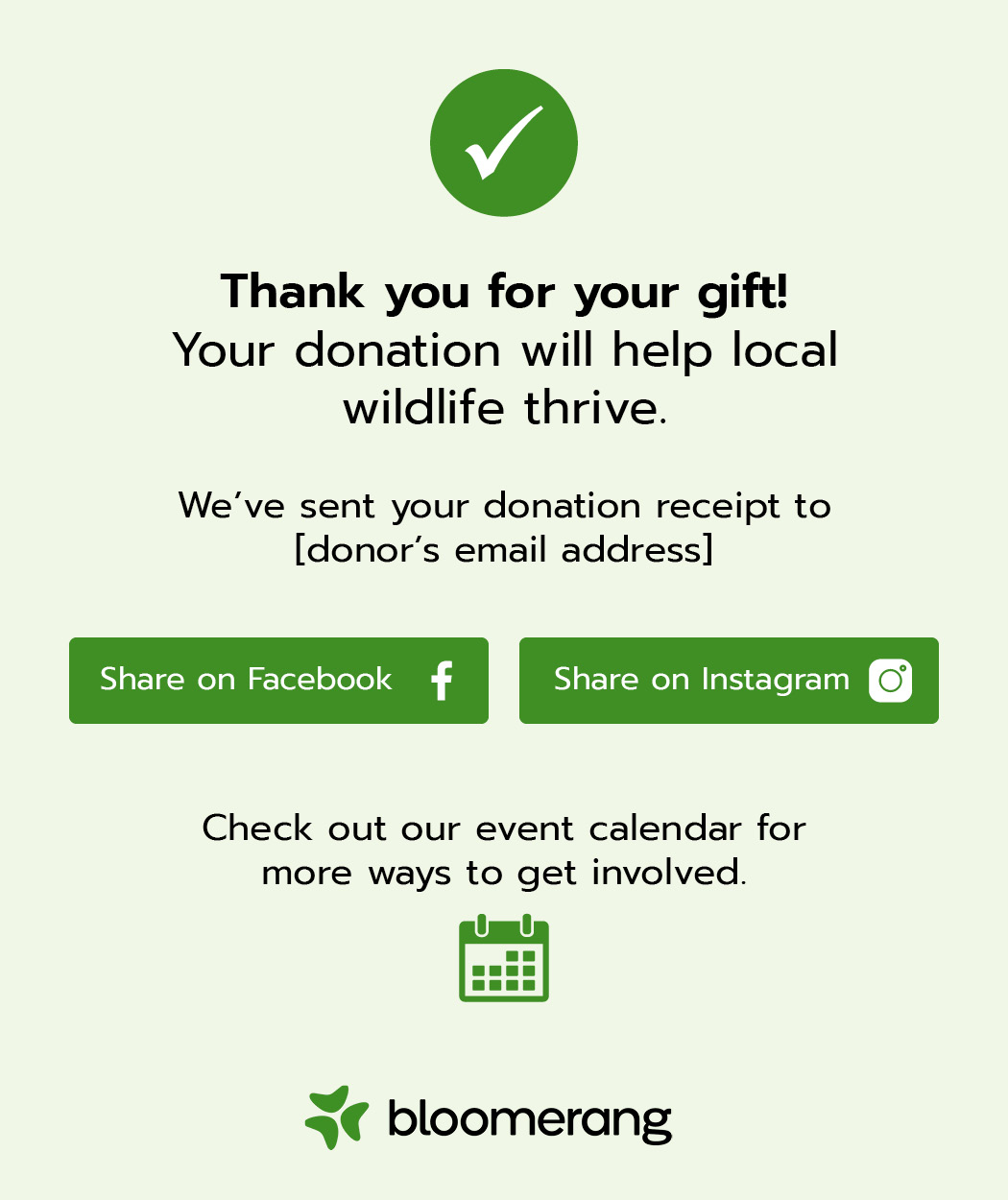Donor recognition isn’t just a formality—it’s the foundation of a lasting relationship. Just as personal relationships thrive on mutual appreciation, so do donor relationships. When people give to your organization, they choose to support your mission over countless other options, and acknowledging their generosity is essential to maintaining their loyalty.
Effective donor recognition reinforces the importance of their support, so your team can cultivate deeper connections and encourage ongoing involvement. That’s why you should seize every opportunity to recognize your donors.
To spark inspiration, let’s explore several ways to ensure your donors feel genuinely appreciated, primarily by leveraging the latest software trends and tools. With the help of these tips, you’ll encourage supporters to give again and again.
Send sincere donor thank-you letters.
Nothing beats the personal touch of a heartfelt thank-you letter. Your donors want to know your nonprofit received their gift and that it’s making a difference. Many donors will actually stop giving if they don’t hear back.
When crafting your letters, make them personal and straightforward. While templates can be a useful starting point, avoid sending anything too generic. Here’s how to make your letters truly meaningful:
- Personalize each letter. Use your donor management system to personalize the thank-you letters with donors’ names and donation amounts.
- Send them quickly. Prompt thank-you letters carry more of a punch, so use your CRM’s built-in email tools to automatically send donor appreciation emails that fill in each recipient’s information soon after they give.
- Connect each donor’s gift to direct impact. Mention the tangible goals your team achieved with donors’ support. Phrases like “your donation helped feed 15 local families in need” or “build two new wells” create a direct link between the donor’s generosity and real-world outcomes.
- Use donor-centric language. In other words, make your donor the focus of your message by emphasizing their impact and interests. Use phrases like “your support made this possible” or “thanks to you, we…”
You can also tell recipients how to take their impact further, such as by volunteering, attending an event, or submitting a matching gift. Here’s an example of this strategy from the Leukemia & Lymphoma Society (LLS):

The letter above outlines the steps to start the matching gift process. It communicates that LLS is grateful for the donor’s generosity and wants them to make the biggest impact possible.
Overall, genuine donor thank you letters are prompt, personal, and specific. To keep things fresh, switch up the format by sending eCards. These digital thank-yous can be just as personal and heartfelt while offering a modern and visually appealing way to show gratitude. Plus, you can customize eCards with engaging designs and animations that reflect your nonprofit’s mission.
Optimize your donation confirmation page.
An effective donation confirmation page can make donors feel appreciated the second they give. Your page doesn’t need to be super elaborate, but it should at least include:
- A heartfelt thank-you message
- Social sharing buttons to showcase their support on Facebook, Instagram, and other platforms
- Additional involvement opportunities, such as signing up for your newsletter or checking out your event calendar
Here’s what an effective confirmation page might look like after someone submits your online donation form:
Consider adding a personal touch by showing the immediate impact of their gift—whether it’s providing meals, planting trees, or funding a specific project. You might include a compelling image or testimonial video to do so.
Create donor recognition plaques or walls.
For donors who prefer public acknowledgment, create donor recognition walls or plaques. A donor recognition wall is a physical display that lists the names of donors to a specific campaign. Meanwhile, a donor recognition plaque can honor an individual donor or all the donors to a campaign.
These physical pieces offer design flexibility. You can display different levels of giving, such as a “Silver Donor” or “Gold Donor,” to add a layer of prestige to your recognition.
Many nonprofits work with third-party vendors to design and install donor walls. If your organization doesn’t have the space for a physical display, virtual donor recognition walls can be just as effective. Displaying them on your website offers a modern alternative that’s accessible to your entire community.
Throw a donor appreciation event.
Go all out by throwing an appreciation event exclusively for major donors. These events strengthen connections and lay the groundwork for major gift fundraising. They can range from intimate one-on-one lunches to grand galas. The key is to choose an event that aligns with your budget and donor preferences.
When identifying potential major donors to invite, consider Bloomerang’s three C’s for major gift fundraising: the depth of their connection to your organization, concern for your cause, and capacity to give. If a donor meets these criteria, honor them with a dedicated appreciation event. Of course, you can always invite low- and mid-level donors too, but knowing who your major gift prospects are and their connection to your nonprofit will help make the most of your conversations.
Here are some event ideas to engage donors:
- Gala dinners: Host a formal event to publicly recognize major donors.
- Private tours: Give donors a behind-the-scenes look at your organization’s operations.
- Catered lunches: Personally thank donors with a relaxed lunch at one of your organization’s facilities or a local restaurant.
- Volunteer appreciation dinners: Include volunteers, donors, and beneficiaries for a full-circle view of your mission in action.
- Exclusive receptions: Host a small, elegant gathering for top donors at a unique venue.
- Outdoor appreciation picnics: This is a casual, family-friendly option that allows for informal conversations.
When planning these events, tailor every detail to your donors. Consider their preferences for food, location, and timing. For major donors, be sure to include a heartfelt moment of recognition, such as a sincere speech expressing your appreciation for their support.
Make personal phone calls.
Calling donors adds a personal touch that goes beyond automated text messages or generic emails. A phone call creates a real-time connection, allowing you to interrupt the chaos of daily life.
Plus, did you know that phone calls can greatly impact the likelihood of second and third gifts? In fact, donors who received more than one phone call within 90 days of their first donation had almost a 60% donor retention rate.
Before making the call, review your donor data to personalize the conversation. Mention specifics like the exact donation amount, how their gift impacted your mission, and their history of support. If the donor doesn’t answer, leave a heartfelt voicemail that conveys the same level of sincerity.
Send donor satisfaction surveys.
Empower your donors to tell you about their experience with your nonprofit. An anonymous survey encourages honest feedback and allows you to discover donors’ opinions on your organization.
Send donor satisfaction surveys to gather input on:
- The donation process. How long did it take? Would they like more clarification on how their donation is being used? If donors gave online, were there any technical issues with your donation software that need to be resolved? Kindful’s online fundraising software guide suggests using software that offers custom donation pages, recurring giving options, donor accounts, effective payment processing, and more to create an enjoyable giving experience.
- Your communication efforts. A donor satisfaction survey will tell you if a donor feels overwhelmed or underwhelmed with the frequency of your communication efforts. They can also rank various communication methods (phone calls, emails, newsletters, or text messages).
- Events. Gather feedback on event specifics like vendors, speakers, music, and location. What was the donor’s overall impression of the event? Would they attend a similar event in the future?
- Your fundraising campaign themes. Include a history of your previous fundraising campaigns and ask which ones your donors liked best.
To maintain interest, include a variety of questions. For instance, you might include multiple-choice, true-or-false, scale, and open-ended questions. However you structure your survey, remember to respect your donors’ time. It shouldn’t take longer than five to ten minutes to complete.
Send thoughtful donor gifts.
Donor gifts are a thoughtful way to show appreciation. Your organization can send gifts on holidays, after a donor’s first contribution, and on donor anniversaries. A donor’s major life events (such as weddings or the birth of a child) also offer perfect opportunities to express gratitude through gifts.
Gift ideas include:
- Branded merchandise: Items like journals, calendars, t-shirts, decals, or mugs make memorable gifts and can double as promotional tools.
- Gift baskets: Popular options like fruit, dessert, or charcuterie baskets pair perfectly with a handwritten thank-you note.
- Gift cards: Where do your donors like to shop? Choose an amount and a store that fits your budget and your donors’ preferences.
Using your nonprofit software, analyze donor data to tailor gifts. For example, a first-time donor might appreciate a cozy branded blanket, while long-term supporters may enjoy a fruit basket. Planning ahead can simplify your gift-giving process.
Donor recognition isn’t just a nice gesture—it’s a crucial element of your fundraising strategy. Start with one of these ideas and watch how thoughtful appreciation strengthens your donor relationships!

